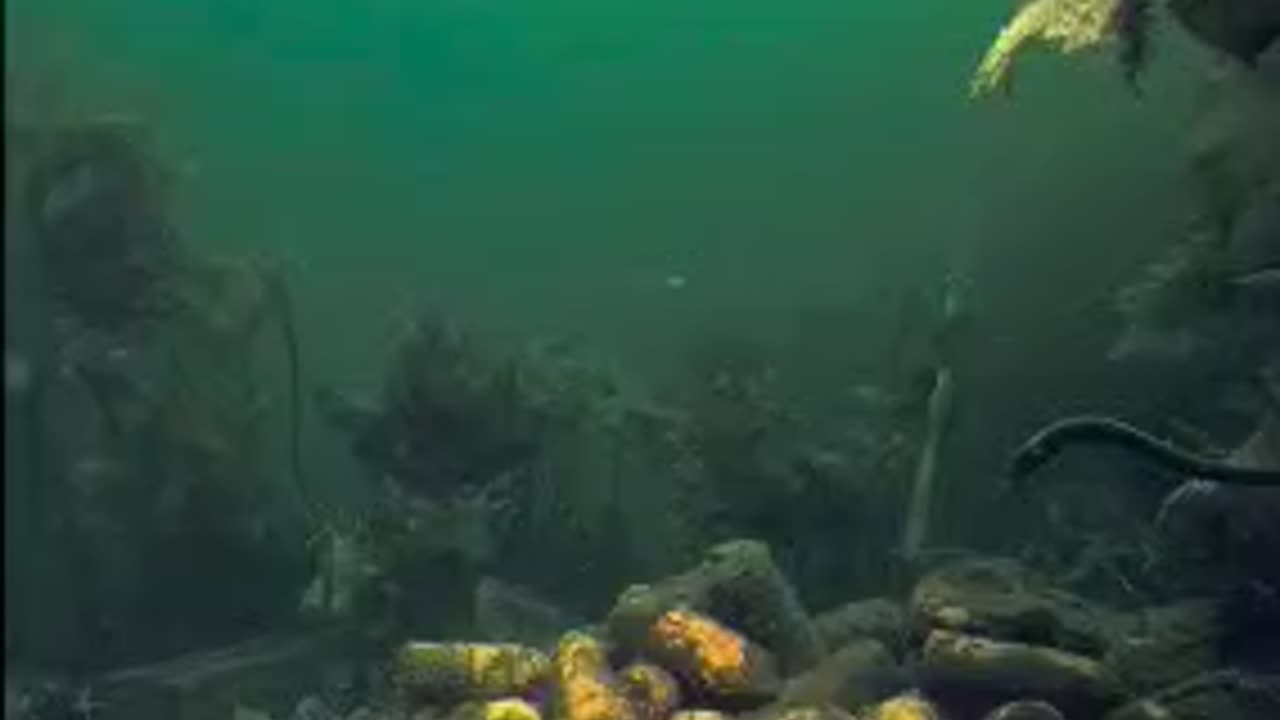Premium Only Content

Leaking Silence: The Atlantic’s Radioactive Disaster Waiting to Happen
#RadioactiveSeabed #AtlanticCrisis #OceanPollution #EnvironmentalAlert #ColdWarLegacy #SeafloorTimeBomb #NuclearWaste #ProtectOurOceans #ScienceExplains #PublicHealth #HiddenHazard #SeafoodSafety #EnvironmentalJustice #OceanResearch #ToxicLegacy #DeepSeaDanger #Radioactivity #ClimateAndPollution #MarineConservation #WatchThis #InvestigativeDoc #MustWatch #SaveOurSeas #AtlanticWatch #GlobalRisk
A legacy of Cold War-era waste disposal has left the North Atlantic seabed littered with aging containers of radioactive material that now constitute a growing environmental emergency. What was once considered a convenient solution, dropping sealed barrels into deep ocean trenches, has become a long-term hazard as corrosion, shifting sediments, and biological activity put those stores at risk of releasing radionuclides into marine ecosystems and, eventually, human food chains.
Many of these barrels were dumped between 1946 and 1990 and were originally sealed with asphalt and concrete and placed thousands of feet below the surface in abyssal plains thought to be stable and lifeless; that assumption has been proven mistaken as researchers now treat these sites as unresolved environmental threats. Contemporary expeditions are motivated by the realization that ocean dumping was widespread and poorly monitored, leaving scientists to piece together where and how much material was abandoned decades ago.
Recent mapping missions using high-resolution sonar and autonomous submersibles have begun to locate and document individual barrels, confirming both intact containers and ones that are corroded, deformed, or leaking bitumen-like material; so far thousands have been found while estimates of the total number dumped run into the hundreds of thousands. These modern surveys are the first step toward quantifying the scale of contamination, sampling surrounding sediments, water, and biota, and establishing baselines for longer-term monitoring and potential remediation.
The principal danger is bioaccumulation: radionuclides such as strontium-90 and caesium-137 can be taken up by plankton, shellfish, and fish and then magnified up the food chain to humans, raising risks of tissue damage, genetic mutations, and higher cancer rates for exposed populations that rely on seafood. Early field measurements aboard research vessels have sometimes shown background-level radiation near survey sites, but laboratory analyses of collected samples are ongoing and the long-term ecological and public-health consequences remain uncertain, making precautionary attention urgent.
Addressing this mounting crisis requires coordinated international action that combines expanded seabed surveys, transparent public reporting, targeted sampling programs, and research into feasible containment or retrieval techniques, with priority given to protecting coastal communities and fisheries. Immediate steps include scaling scientific expeditions, funding independent testing of seafood near affected regions, and negotiating a shared policy framework for deep-sea legacy pollution, because the choices made now will determine whether this buried hazard remains contained or becomes a source of harm for millions.
-
![MAHA News [12.5] Glyphosate Study Retracted (MONSANTO), Vaccine News (COVID), DMSO Chat](https://1a-1791.com/video/fwe2/02/s8/1/0/u/D/F/0uDFz.0kob-small-MAHA-News-12.5.jpg)
Badlands Media
13 hours agoMAHA News [12.5] Glyphosate Study Retracted (MONSANTO), Vaccine News (COVID), DMSO Chat
22.3K -
 1:11:14
1:11:14
DeVory Darkins
5 hours agoJeffries SCRAMBLES After National Gas Prices hit record low amid AFFORDABILITY CRISIS
202K85 -
 56:44
56:44
The Quartering
4 hours agoSpam Calls Are Out Of Control, Candace Hits Rock Bottom & More Poison Food
48K83 -
 47:44
47:44
Tucker Carlson
4 hours agoRupert Lowe Warns of the Globalist Agenda Destroying the West and the Revolution Soon to Come
75.8K119 -
 1:16:03
1:16:03
Sean Unpaved
5 hours agoWill Miami Be "ODD MAN OUT" Of The College Football Playoff? | UNPAVED
30.9K1 -
 58:31
58:31
Jeff Ahern
3 hours ago $1.25 earnedFriday Freak out with Jeff Ahern
19.8K6 -
 27:03
27:03
The Kevin Trudeau Show Limitless
2 days agoThey're Not Hiding Aliens. They're Hiding This.
41.6K59 -
 2:04:26
2:04:26
The Culture War with Tim Pool
6 hours agoWoke Has INFECTED Goth, Punk, & Metal, MAGA Must Save the Art | The Culture War Podcast
141K62 -
 1:12:25
1:12:25
Steven Crowder
6 hours agoCNN Declares J6 Pipe Bomber White & Nick Fuentes Interview Reaction
339K297 -
 LIVE
LIVE
Dr Disrespect
6 hours ago🔴LIVE - DR DISRESPECT - ARC RAIDERS - FREE LOADOUT EXPERT
955 watching